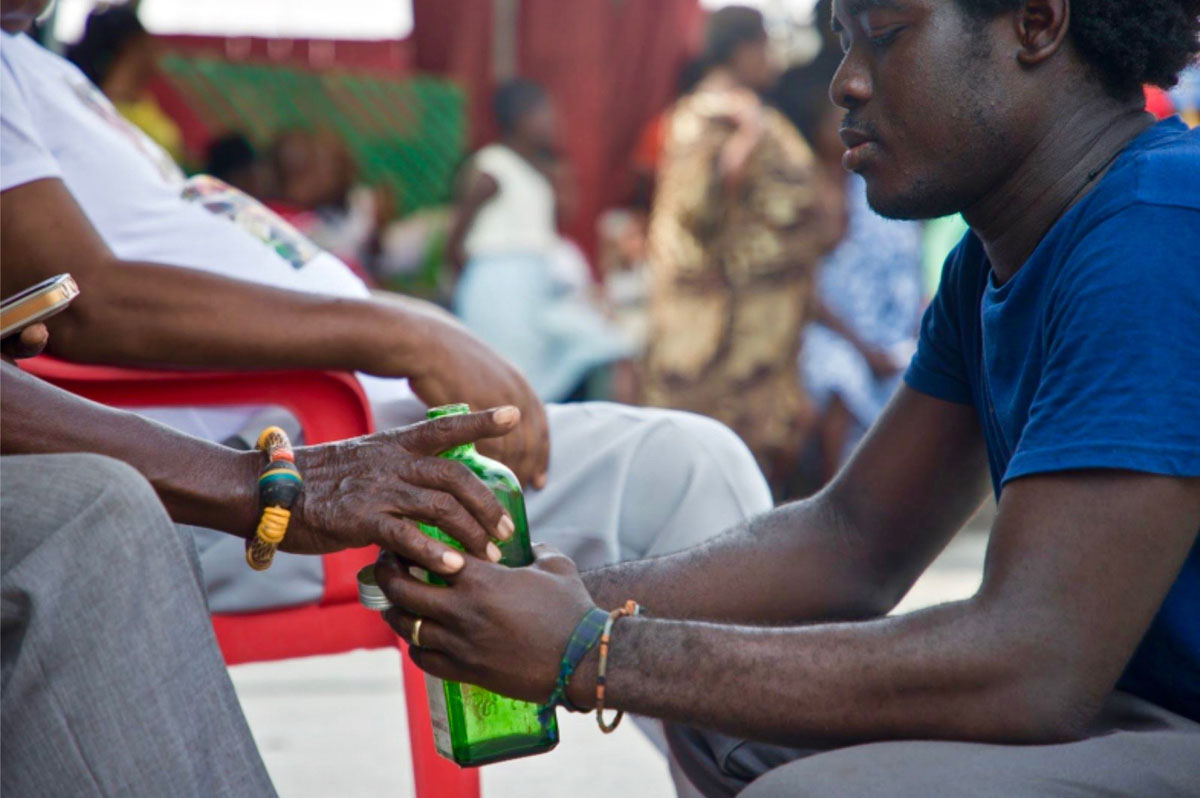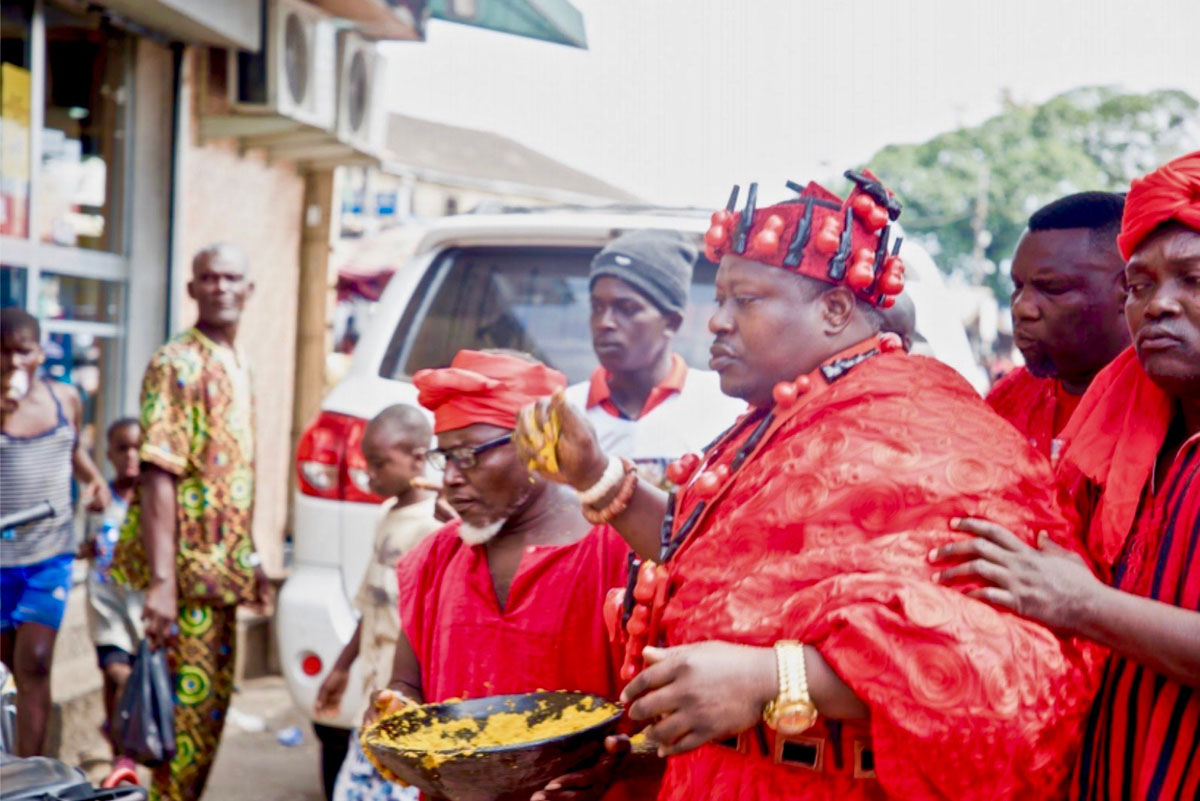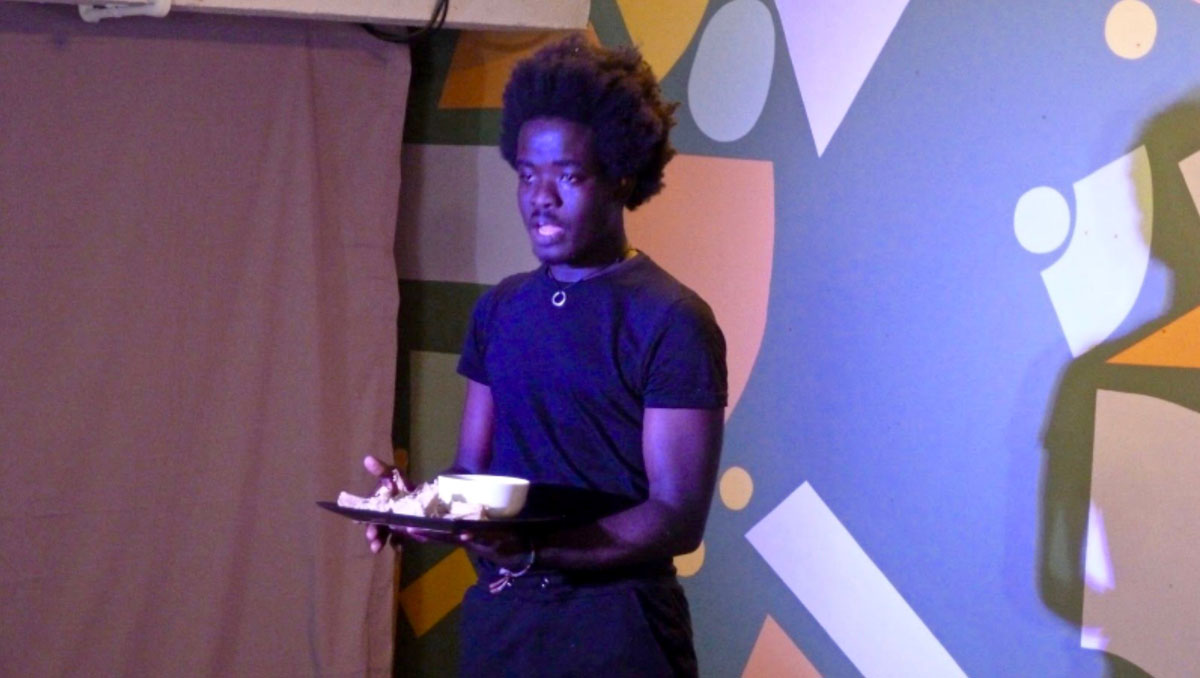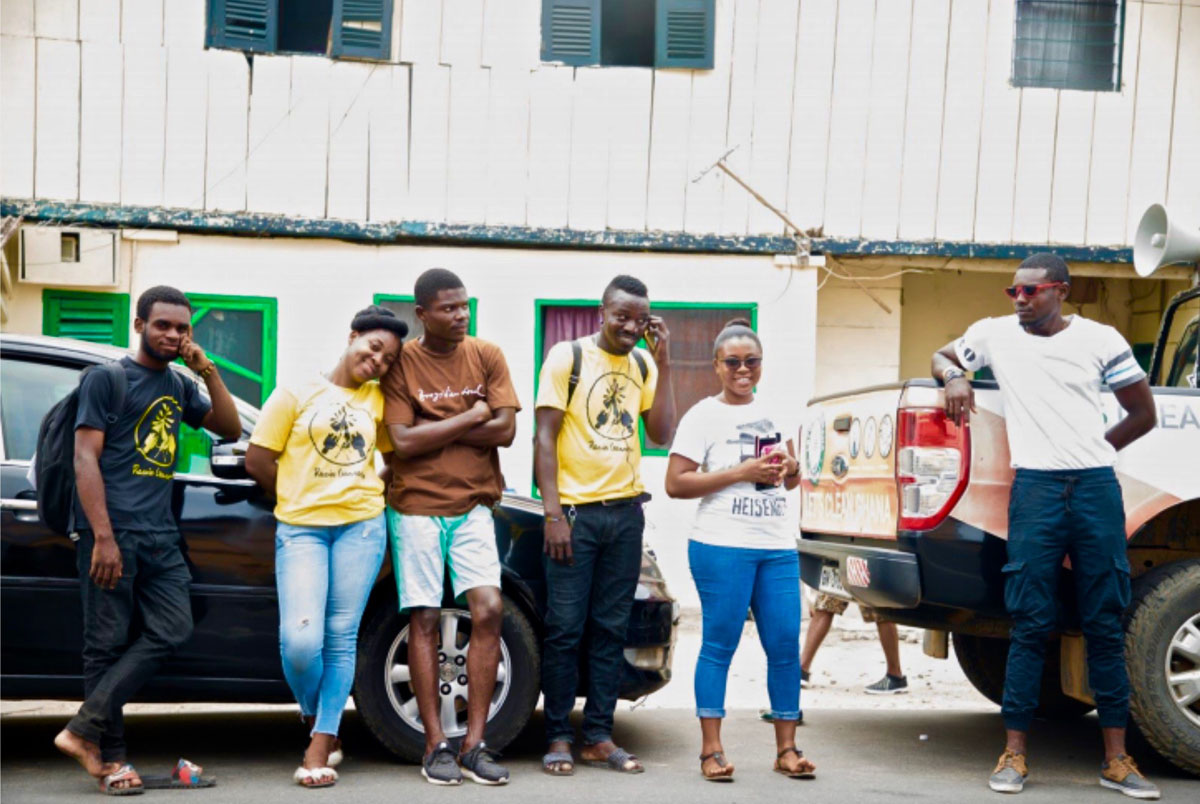As Seeding Art Currency comes to a close, we’ve been reflecting on the project and the wonderful events we’ve been lucky to host here at the hostel.
Remember our very first SAC event? It was a spectacle of rhythm and movement by musician and dance artist, Nii Kwartey Owoo. Nii performed ‘The Harvest’, a personal response to the struggle of hunger and sacrifice found in his community. The passionate live performance was followed by a sharing of food.
We caught up with Nii to find out a bit more about his involvement with music and dance, and how he goes about preparing for a performance.

Nii Kwartey Owoo, Leeds by Mary Owoo (2018)
Can you remember your first involvement with dance, drumming or any other form of performance?
“I was less than a year old in my first ever performance and this was with both my mum and dad in a production ‘Miamo Mi’ (keep me safe in your arms), with me being the centre of the performance at the National Theatre of Ghana. I like being told about this performance and other stories that evolved around putting this production together and it makes me strongly believe that I am destined for the stage.
“My earliest memory of drumming is pretending to play the talking drums embossed on the Ghanaian currency by that time, 50 pesewas, producing the sounds with my mouth. At the age of 4, I was playing and dancing at the graduation for the six year olds who had completed kindergarten and were moving on to class one.”

Pesewas Coin
“My family house was, by then, the dance hub for all performing arts artists who have now become big names in West African music, dance and theatre. Growing up and seeing dance and theatre on my doorstep and the constant lingering of music in my head was the most amazing thing to me, especially because I always had a natural interest in becoming a performing artist. Knowing the early beginnings of these great people and their artistic journey motivated me to follow in their footsteps.
“Since then, I knew exactly what I wanted to become.”
Do you have any routines to prepare yourself mentally/physically for a performance?
“Most of my performances are and have been accompanied by stories, imageries, characters and beliefs. When preparing for a performance, I always start to retell the story to myself with music, recalling the voices of elders and people who have told this story to me or are part of it. Along with proverbs, I try to imagine myself in the centre of all of this and once in this state it’s almost as real as it can be in my imagination.”

Nii Kwartey Owoo and Chief Linguist pouring libation at the House of Owooman, Accra, Bright Senanu Agbosu (2018)
“Once I have been there and revisited the story, I can give an accurate artistic account of it. I then try to imagine myself presenting this with all the rehearsals, markers, timelines and body language, in what I call ‘watch me, watching. I show respect and homage to the original characters of these stories handed down to me and with the blessing of my ancestors and permission to retell their stories, I share them with people who did not get to meet the original storytellers. It is important to me that these characters are celebrated for what they left behind.
“Finally, into the present. The audience is waiting. My focus is on the routine. I encourage myself by looking back at a previous performance and the positive feedback from the audience while I stretch and get ready. Everything checked. I want more!”
Your performances are deeply rooted in your own cultural heritage but how did you create ‘The Harvest’ performance?
“The initial idea came from a conversation I had with artist and curator Louise Dwyer on an earlier research she was conducting, through which I got to share the spirituality, symbolism, activities and traditions around the Homowo festival of my Ga tribe in Accra, Ghana.
“When Louise got in touch with me again with the opportunity to present my work at the Art Hostel, to create a dance piece in response to the Seeding Art Currency exhibition, and with the idea of seeds in mind, it was a good opportunity for both of us to put ideas to work.
“Working closely together with Louise was key in being able to respond to the theme of the exhibition, whilst also giving an accurate account of the Homowo festival. Reflecting on my own experience of the festival in Ghana over the summer and the years I spent growing up in my community, I combined my traditional knowledge and memories together with rhythms, sounds, movement and words to create this contemporary performance piece. Furthermore, being under some time constraints meant my practice was reactive and I also had to adapt what I wanted to create to the performance space at the Art Hostel.”

Traditional Ceremony at Homowo Festival, GaMashie, Accra, Bright Senanu Agbosu (2018)
How was the performance on the night at Art Hostel?
“We were at the venue the night before the performance putting light, sound and seating in place and also to see how practically the space would work for the performance and the sharing of food. The whole performance had to be reworked to suit the venue, which worked very well in the end.
“The performance was well attended, with an interesting mix of people in the audience: people from the diaspora, visitors to the Art Hostel, Ghanaians, other artists and those working within the arts sector. The Art Hostel staff and volunteers were very helpful and receptive and I would be happy to present work in the space again.”

Nii performing “The Harvest”, The Art Hostel, Leeds, by Mary Owoo (2018)
How important was the sharing of food following the performance?
“The sharing of food was equally as important as the story itself, not only does it give people the opportunity to try the food, but eating from the same plate and bowl is very symbolic as it unifies and brings people together. In the context of the UK where people would normally not eat from the same plate, this part of the event helped bind us together, leaving personal differences aside. You take your share of the food and pass it on with a smile to the next person, trying to identify the ingredients and flavours, turning to the person beside you and saying it tastes good or interesting and ‘oh, I like the sauce’ – it bonds people together.”

Nii performing “The Harvest”, The Art Hostel, Leeds, by Mary Owoo (2018)
“This completed the whole performance and embodied the essence of the Homowo festival, where people come together to ‘hoot at hunger.’ It also gave everyone the chance to have that spiritual contact with all those who lost their lives before the seeds were planted and harvested. It brought everyone closer to my ancestors and not just to see and appreciate the dance piece but to share and dine with my ancestors in ‘hooting at hunger.’”
What are you working on currently?
“My main focus for the new year will be my contemporary choreographic work, as I will be involved in an artist development programme with ACE dance and music, in Birmingham. During this time I will be completing some residencies and creating new work with a range of professional dancers and re-working some of my choreographic pieces, including ‘The Struggle of Man’ and ‘The Harvest’.
“I have several other projects I am currently working on, one longstanding project is an online community radio station in Accra, Radio GaMashie, which provides a platform for young people to learn DJ and broadcasting skills. I also currently teach West African dance at Yorkshire Dance and West African Drumming in Leeds. I will also be teaching on the 24th November 2018, a day of West African Drumming and Dance in North Leeds. You can find out more about it at www.miishe.com.”

Radio GaMashie volunteers, GaMashie, Accra, by Bright Senanu Agbosu (2018)
“The Harvest” was curated by MA Curation Practices course student, Louise Dwyer.
How did you find working with a curator to perform ‘The Harvest’ as part of Seeding Art Currency?
“Louise made clear suggestions throughout the process which was good for me because she questioned my work, trying to make sure the end product communicates well to anyone watching. Working with a curator also helped me to refine what to include in the piece and how to convey my messages through the performance.”
Louise saw Nii perform and lead a group of artists and musicians at the Leeds Library as part of the ‘Island to Island’ exhibition earlier this year. Her interests led her to study how art can cross boundaries and open up storytelling and audience engagement.
“Through my own studies during my MA Curation Practices course, I have become engrossed in the aspect of art in other forms linked to museums and galleries, and have become more aware of the elements in Nii’s work”
Did you see Nii’s performance? Let us know about your experience in the comments below.
